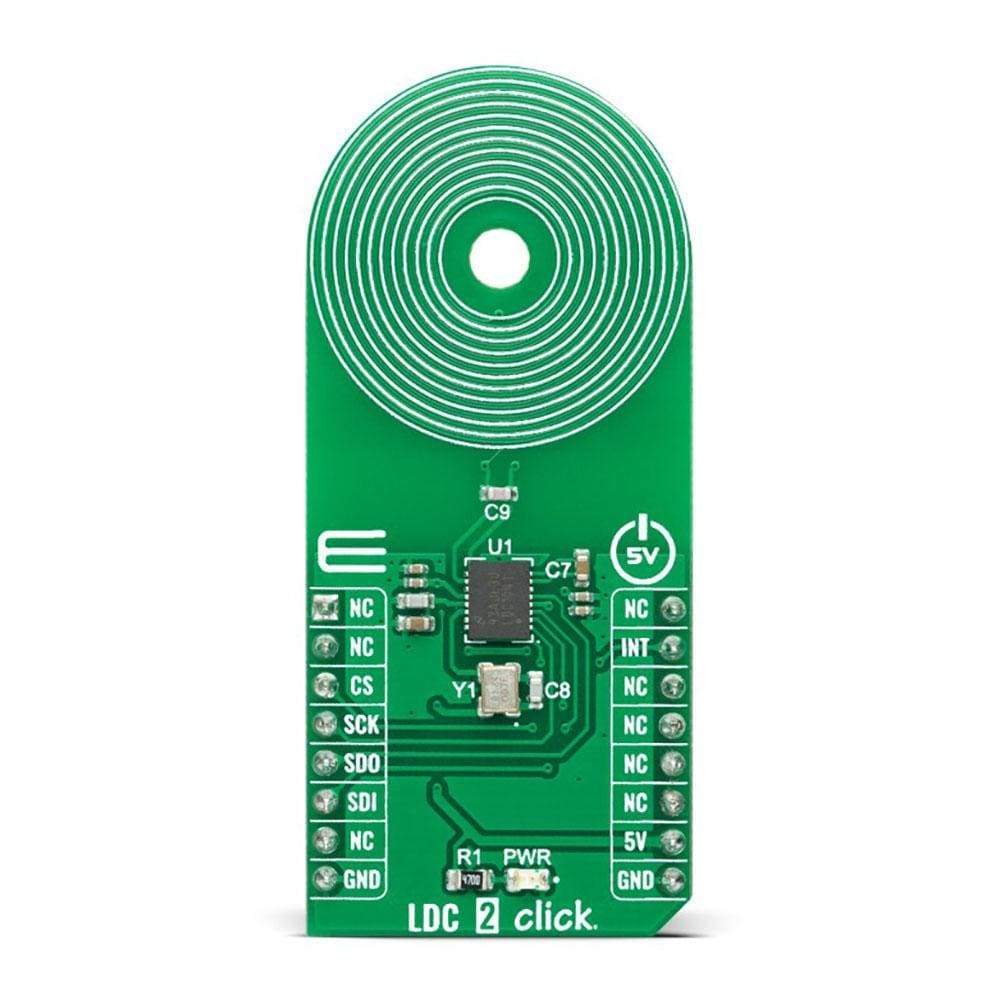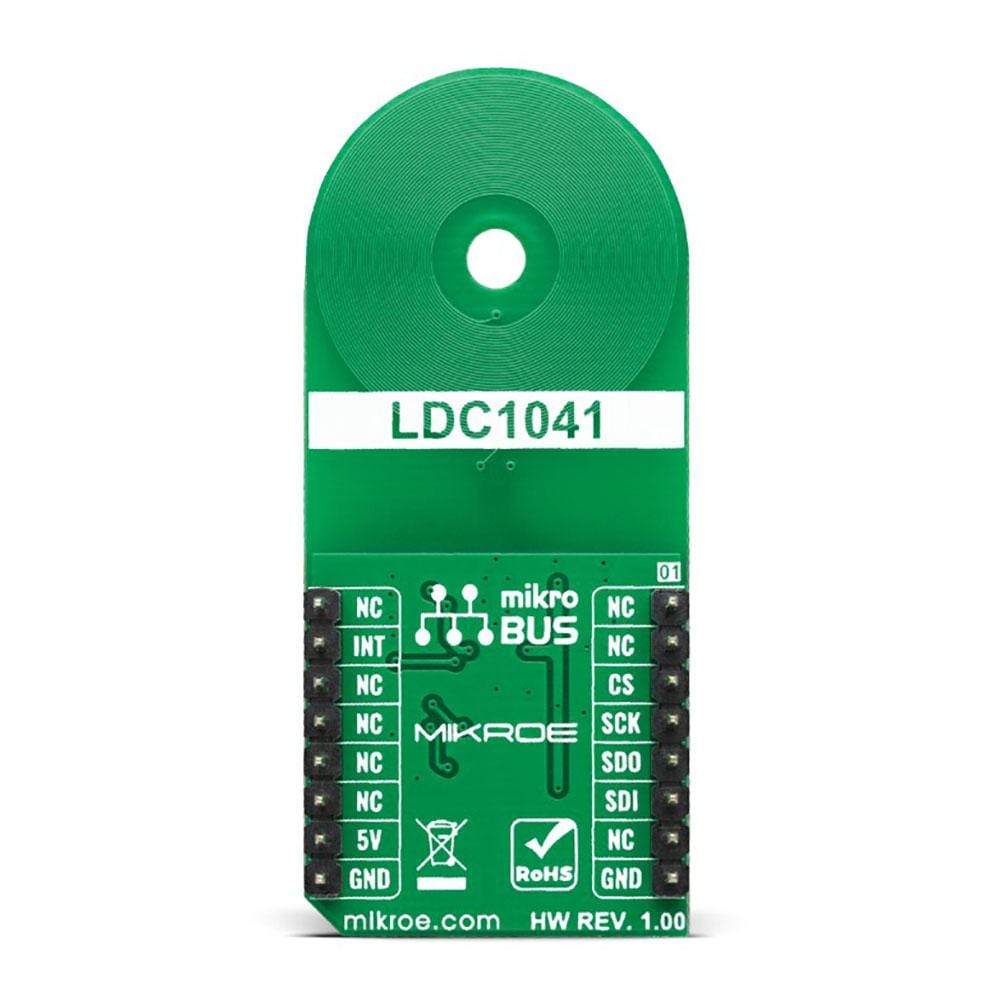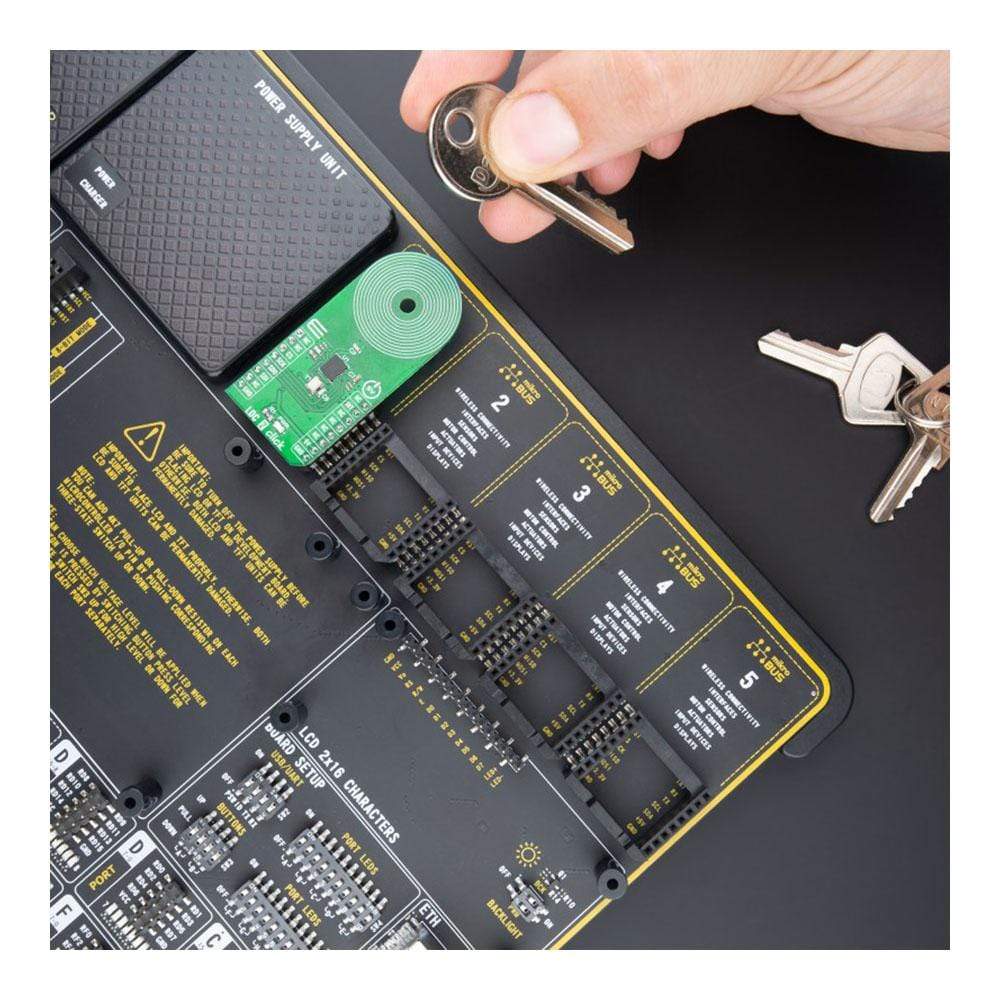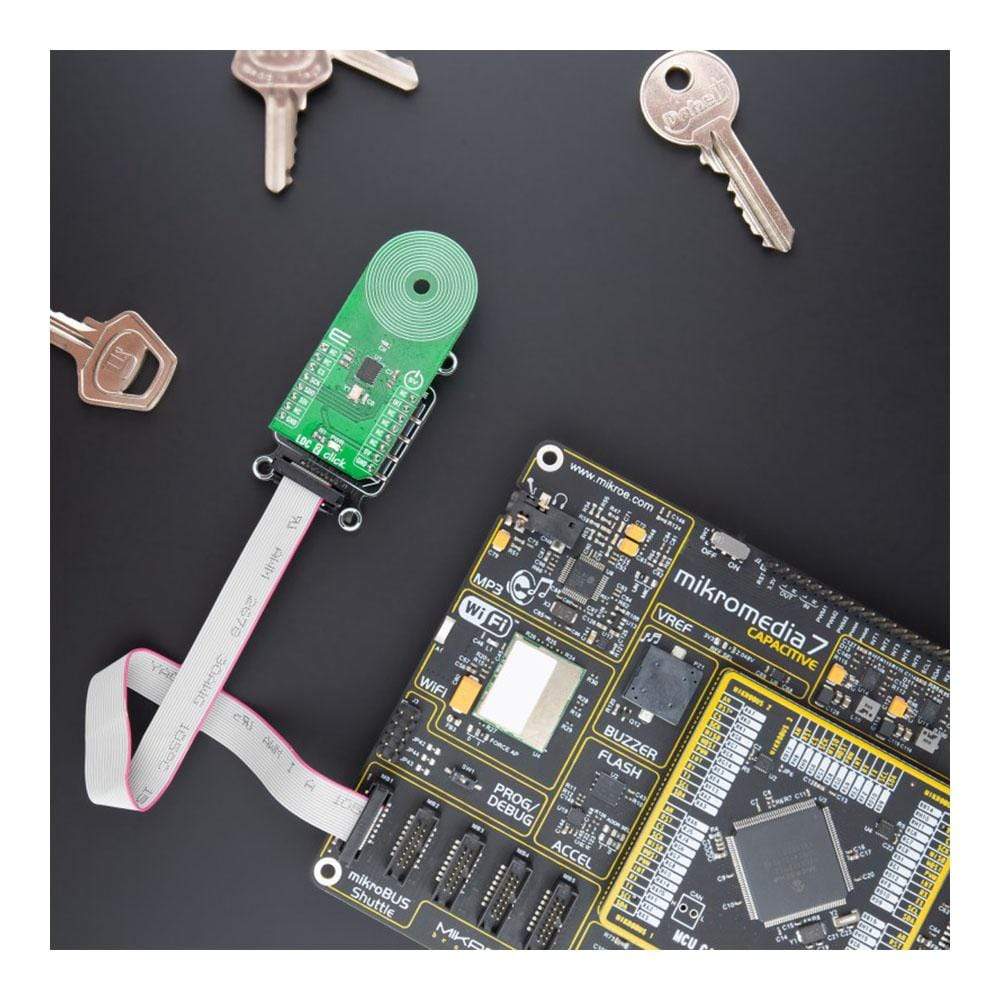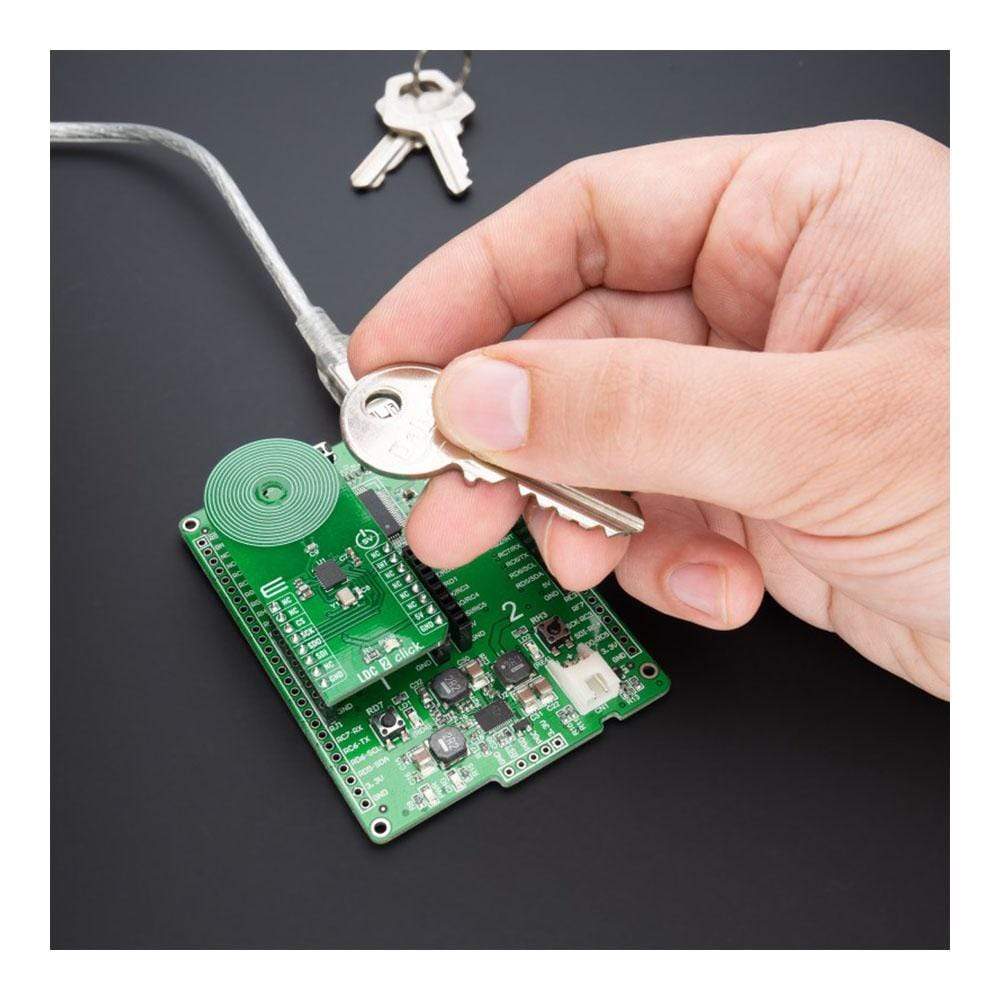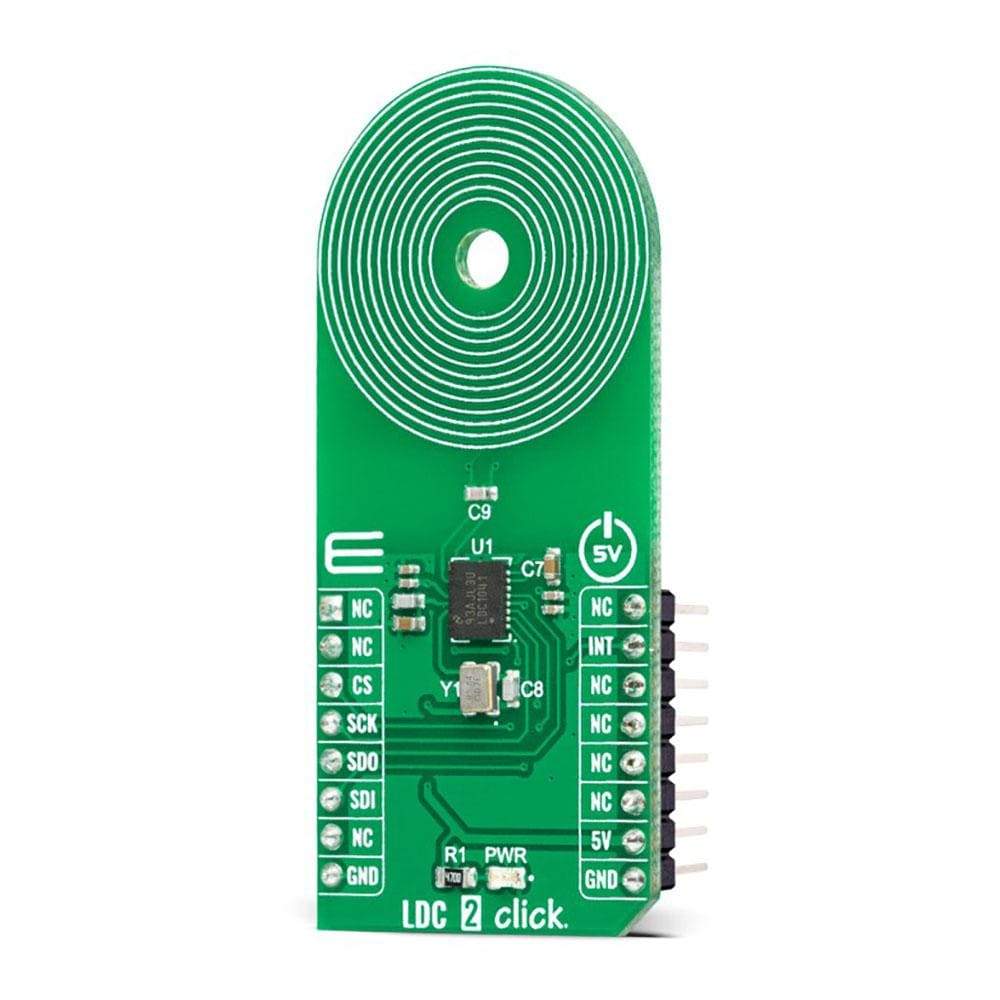
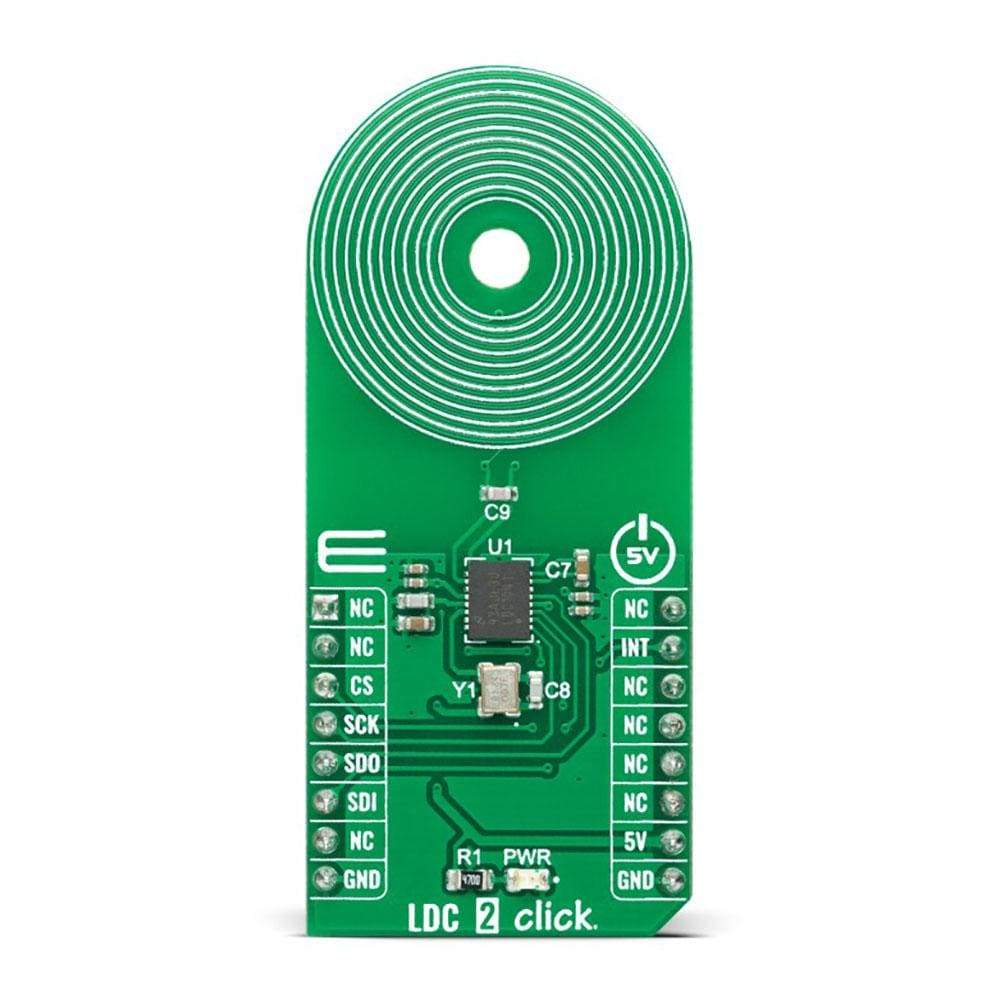
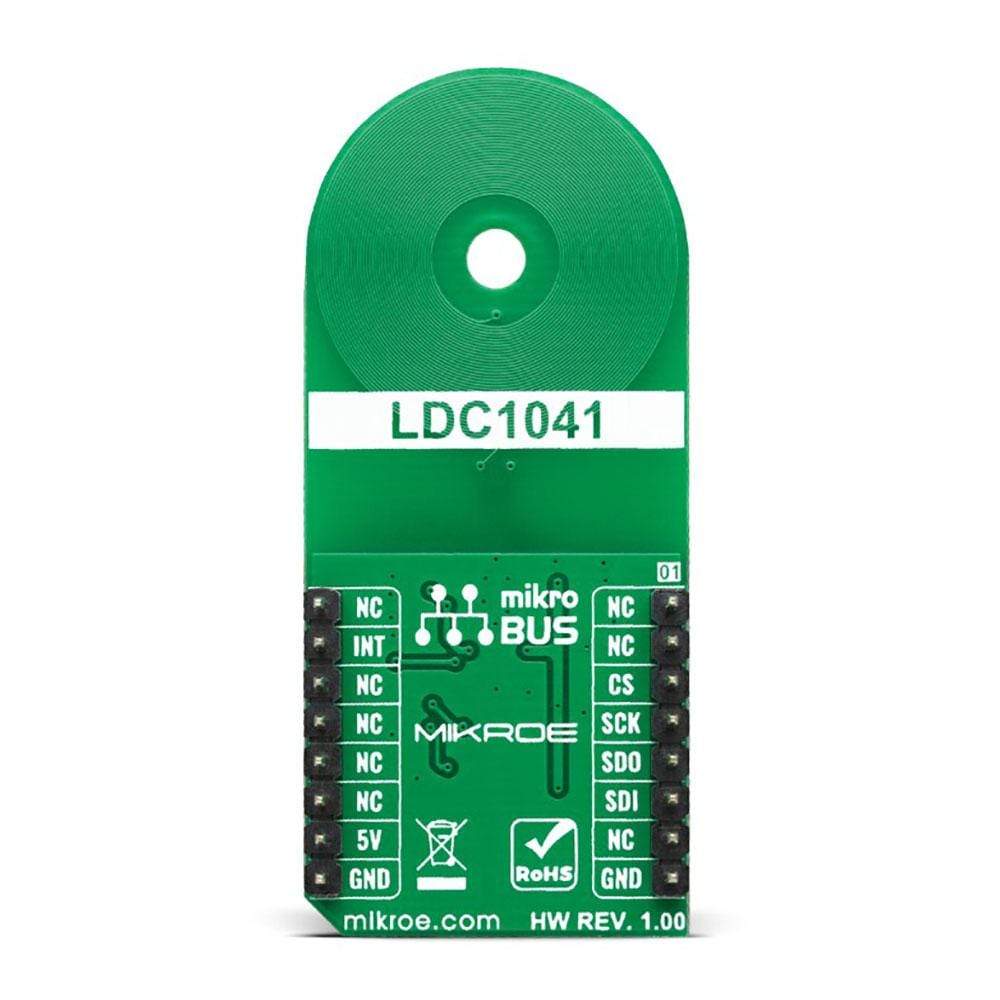
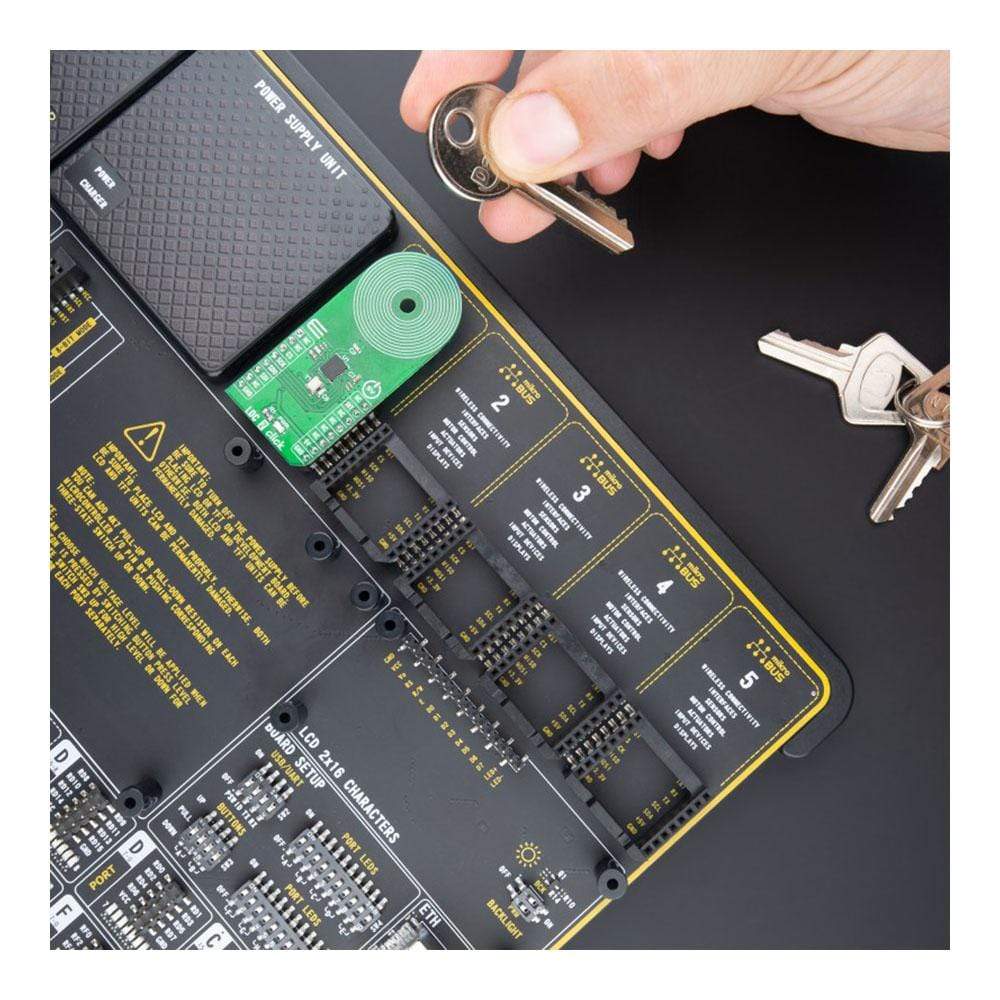
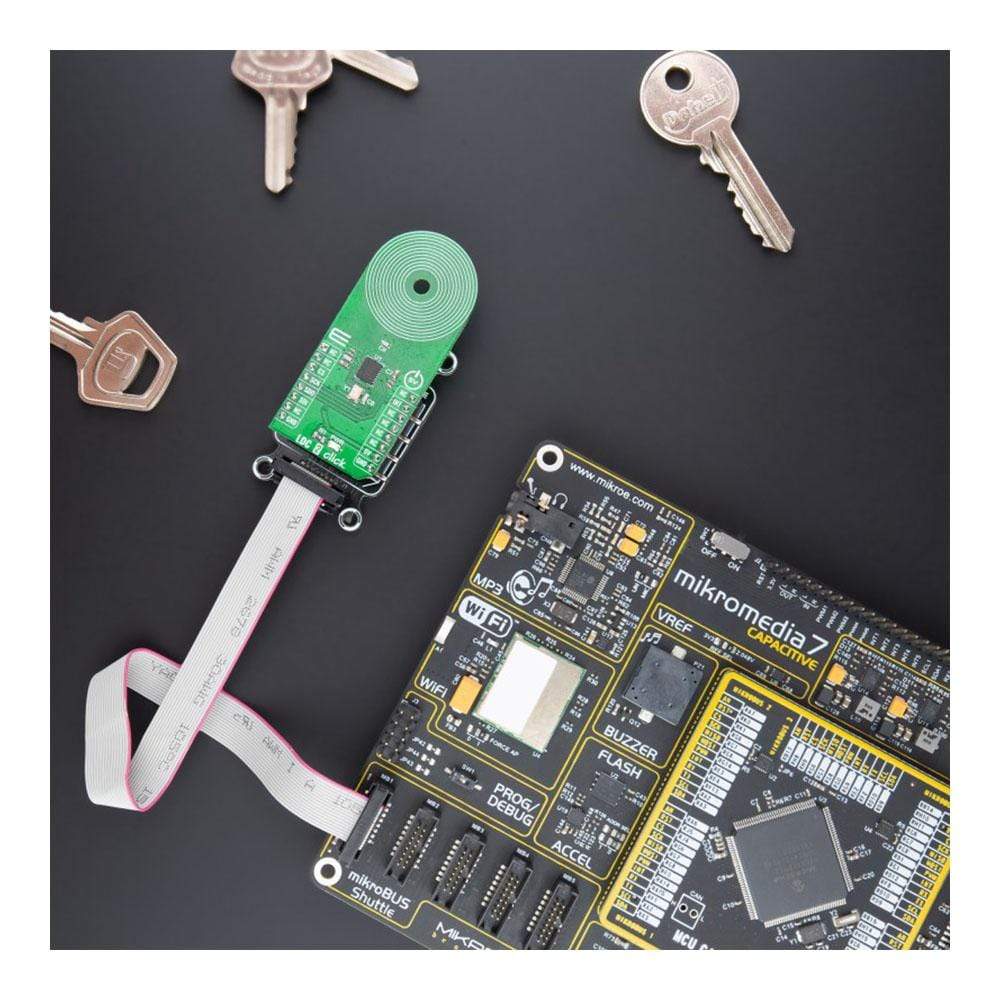
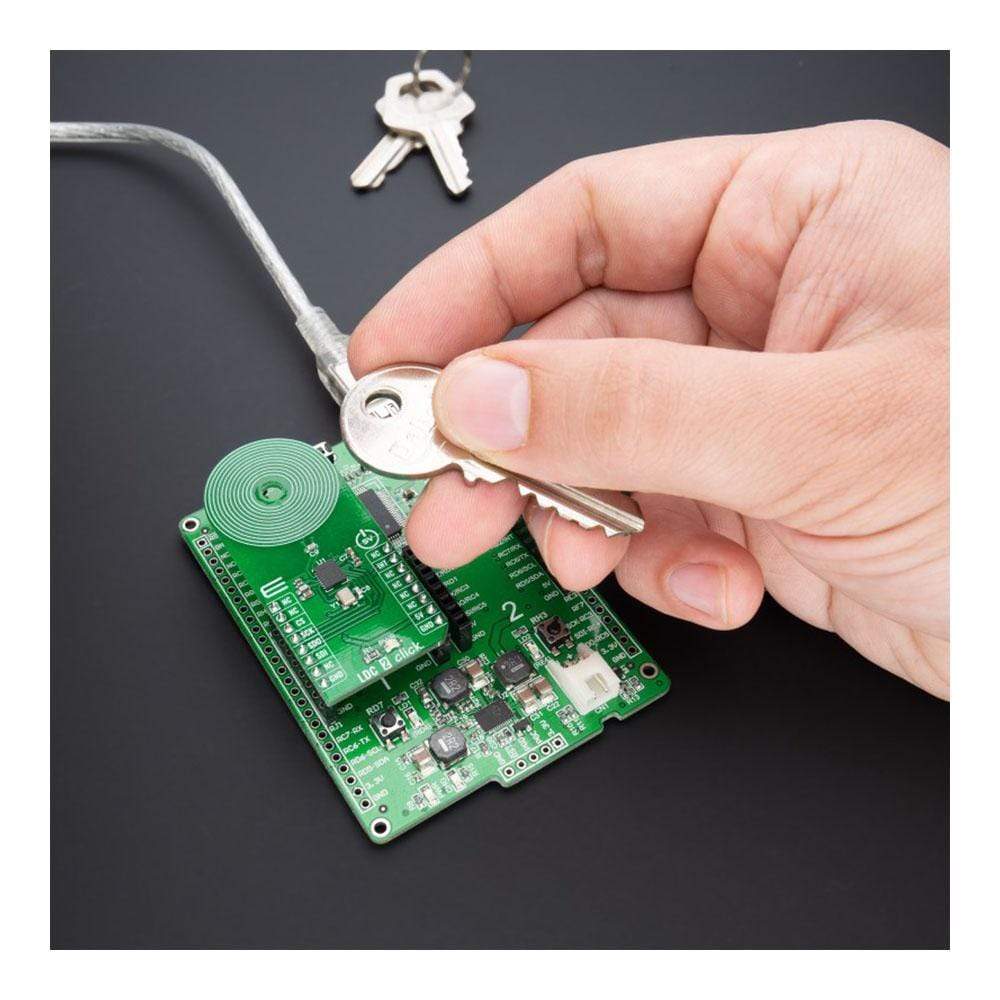
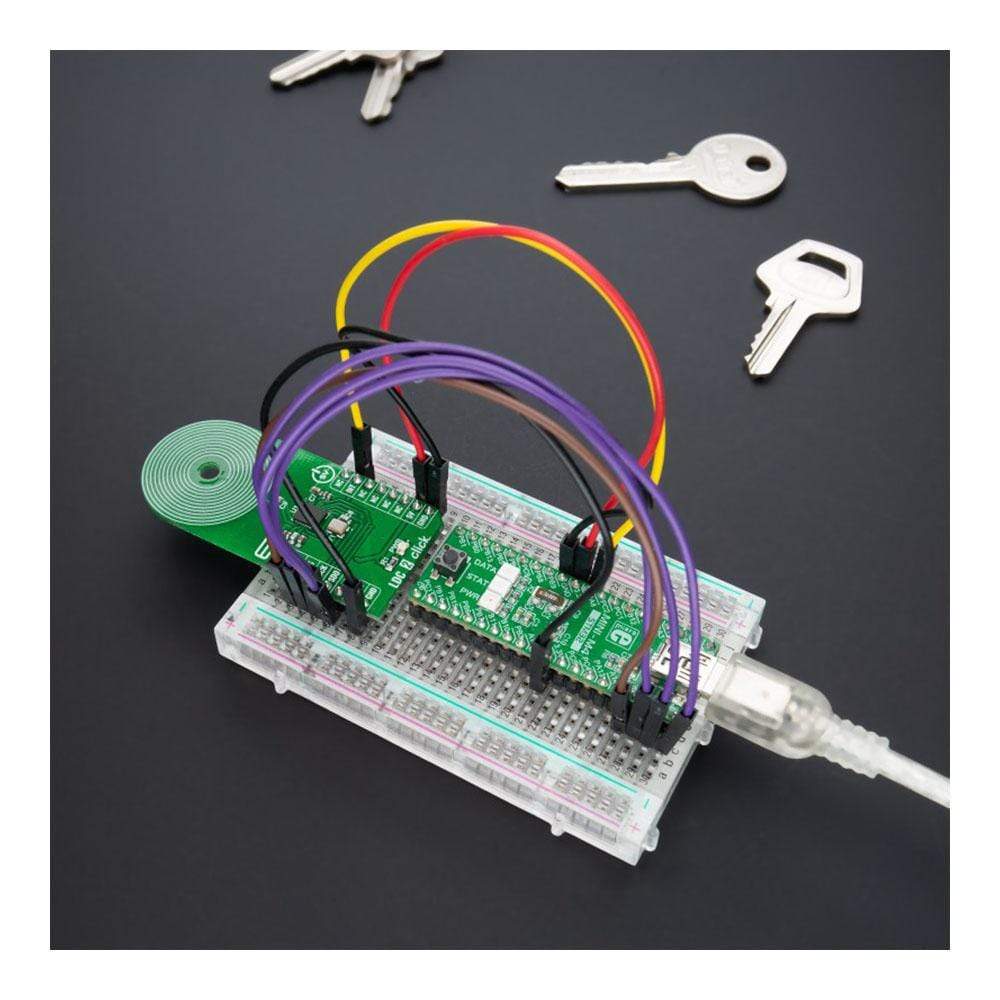
Overview
The LDC 2 Click Board™ is a compact add-on board that measures inductance change which a conductive target causes when it moves into the inductor's AC magnetic field. This board features the LDC1041, inductance-to-digital converter (LDC) for inductive sensing solutions from Texas Instruments. This Click Board™ is easy-to-use, requiring only the sensor frequency within 5kHz and 5MHz to begin sensing, and demonstrates the use of inductive sensing technology to sense and measure a conductive target object's presence, position, or composition. It comes with an example of a PCB sensor coil designed to provide the user with maximum flexibility. This Click Board™ is suitable for contactless, short-range sensing that enables high-resolution and low-cost position sensing of conductive targets, even in harsh environments.
The LDC 2 Click Board™ is supported by a mikroSDK compliant library, which includes functions that simplify software development. This Click Board™ comes as a fully tested product, ready to be used on a system equipped with the mikroBUS™ socket.
Downloads
Le Carte à clic LDC 2™ est une carte complémentaire compacte qui mesure le changement d'inductance qu'une cible conductrice provoque lorsqu'elle se déplace dans le champ magnétique alternatif de l'inducteur. Cette carte comprend le LDC1041, un convertisseur inductance-numérique (LDC) pour les solutions de détection inductive de Texas Instruments. Cette Click Board™ est facile à utiliser, ne nécessitant que la fréquence du capteur entre 5 kHz et 5 MHz pour commencer la détection, et démontre l'utilisation de la technologie de détection inductive pour détecter et mesurer la présence, la position ou la composition d'un objet cible conducteur. Elle est livrée avec un exemple de bobine de capteur PCB conçue pour offrir à l'utilisateur une flexibilité maximale. Cette Click Board™ convient à la détection sans contact à courte portée qui permet une détection de position haute résolution et à faible coût des cibles conductrices, même dans des environnements difficiles.
La carte à clic LDC 2™ est pris en charge par une bibliothèque compatible mikroSDK, qui comprend des fonctions qui simplifient le développement logiciel. Cette Click Board™ est un produit entièrement testé, prêt à être utilisé sur un système équipé du socket mikroBUS™.
| General Information | |
|---|---|
Part Number (SKU) |
MIKROE-4783
|
Manufacturer |
|
| Physical and Mechanical | |
Weight |
0.02 kg
|
| Other | |
Country of Origin |
|
HS Code Customs Tariff code
|
|
EAN |
8606027383724
|
Warranty |
|
Frequently Asked Questions
Have a Question?
Be the first to ask a question about this.


